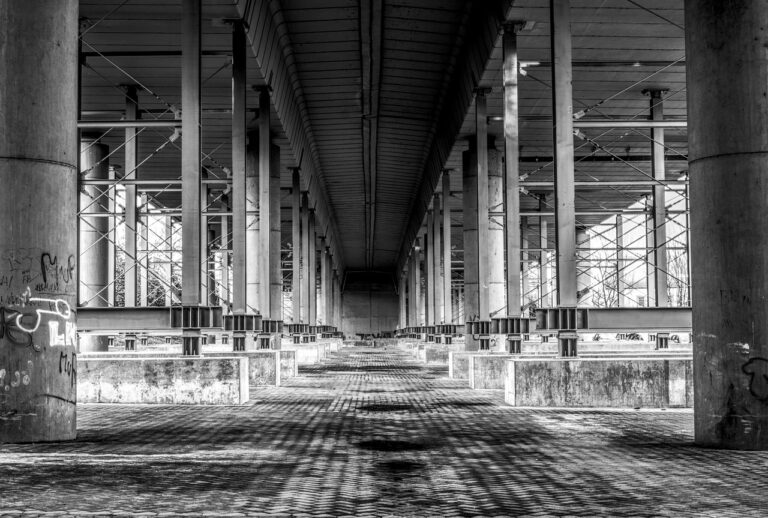-and so it goes with the construction flash-job.
“The best laid schemes o’ Mice an’ Men, / Gang aft agley.
Any figuring of a flash-jobŌĆÖs accelerated projectŌĆÖs longest path must reach a critical mass when maximum possible compression is reached. Depending on size and complexity of the flash-job, and the acumen and integrity of the resources, this may average between 25-30%. Historically, flash-job builders do not have a high rate of achievement at such levels of compression.
Yet I routinely see flash-jobs scheduled with multiple shifts go south even before axis lines are set. Many of these projects include as much as 50-100% compression; the lower of which is far higher than accepted tolerances. At some point, adding more resources is a losing proposition. I have met few individuals who could fairly assess just when that point is reached. One must consider the work: if weŌĆÖre moving earth, we can add equipment and operators, and laborers. But how can we mimic that effort in a micro NYC Prada or Ralph Lauren boutique with a budget in excess of $1,500/SF?
“Harried project managers should have little wings on the side of their desk chair: denoting a turbulent flight directed by the seat of their pants – and a lightning rod.
Yet proper production rate and access assessments need to be an intrinsic component of any resource driven schedule in order to project the forward pass: one canŌĆÖt mindlessly ŌĆśbombŌĆÖ a job with craftsmen and women, and call that an examined or calculated effort, can they? In fact, they (have to) do it all the time, if they havenŌĆÖt made proper compression calculations.
But seldom is there ever a dialectic regarding the veracity of these calculations between builder and stakeholder, who both know that overloading the project with resources will mollify any doubters; as if to say:ŌĆØ IŌĆÖm doing everything I can, by adding warm-bodies.ŌĆØ But the fact remains that most are not paying due diligence to accelerated schedule calculating, nor do they take into consideration anything less than ideal conditions.
The consequences of indiscriminately bombing a project are
- decreased rate of production
- lock-out, or no access to work areas
- increased rate of injury
- increased rate of mistakes
- absence of free-float effectively renders all activities as potential longest path candidates
- premium wage rates
- deprecation of accountability of resources
- they always crash at the end
- itŌĆÖs bloody awful to watch, and statistically is a de-motivator – a drag on morale.
A larger problem lies in the coordination of custom FF&E, and access to areas by multiple trades. What good is it having double resources present, if they have no material to work with?
Retail projects will quickly usurp the control component of ┬Āproject controls estimator or scheduler, which is precisely why I donŌĆÖt like them: if IŌĆÖm really not controlling the schedule, than I am not doing my best work. ┬ĀTo a project manager, the only project more obnoxious than a NYC boutique job is a NYC summer job schedule (Memorial to Labor Day), when most exclusive buildings permit noisy renovations to take place.
“The notion of a critical path for a sixteen-week boutique retrofit project is an abstraction few could quantify, or even describe, so why even try?
The reason these projects are such a nuisance is because they invariably make incessant, unreasonable, and even preposterous demands, on those prosecuting the work. Naturally, the party responsible for selling an unachievable schedule is seldom under duress to be held to account for oversights: the production team will have to make-do or die. In high-end construction, itŌĆÖs figuratively speaking, the latter, or rather excessive breaches of both schedule and budget.
If you have flash-jobs booked over the summer, just remember youŌĆÖre not the only sand in the beach: donŌĆÖt count on a perfect storm amid the chaos of hot, sweaty NYC summer nights, where the service elevator line winds around the block.
Boutique and luxury residential projects have many of the same elements in common that defy estimation, and especially – scheduling.
- they both have foreshortened schedules that require extra resources to achieve, as well as sequences with complex interdependent relationships that have hopelessly overlapping float-paths that change daily.
- Boutique and luxury work require a lot of customizations and furnishings that require minimum durations, durations that are routinely over-promised and under-delivered.
- Even if resources are enhanced, any design change can quickly scuttle the effort, especially in a magnified schedule environment.
In order for a flash-job to be successful, it must have a conformed set of drawings before work commences. The reason for this prerequisite is the dubious likelihood of the luxury of a design clarification (RFI) or design change window. Despite the hype of BIM driven design changes beamed right to your smartphone, I donŌĆÖt see high-end builders getting a lot of sketches over the course of a flash-job: that way of building is as nebulous as any summer schedule.
“Most contractors aren’t geared toward facilitating their forces toward accelerated schedules. They should stick to timelines that have reasonable float windows.
The success of the flash-job also must include the critical equations for enhancing resources to reasonable levels, and only when they are needed, as well as preordered FF&E that is customized or standardized to field ŌĆśholdŌĆÖ dimensions: thereŌĆÖs no time for a submittal/review/fabricate/deliver window: FF&E is pre-ordered, and waiting to be shipped.
Despite his or her very best, there is little more a boutique or luxury residential scheduler can hope to do to but to approximate some general time-frames for groups of activities; and even these will be subject to wild fluctuations once exposed to the reality principle. To try to do more than that would prove to be an exercise in futility that would defy the acumen of a whole roomful of BIM operators.










